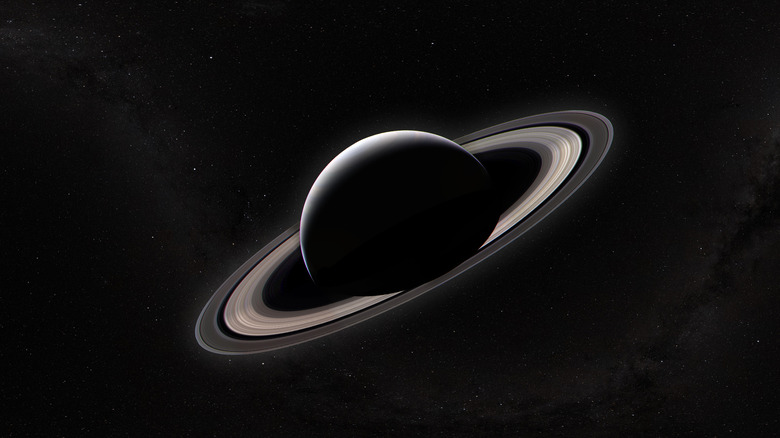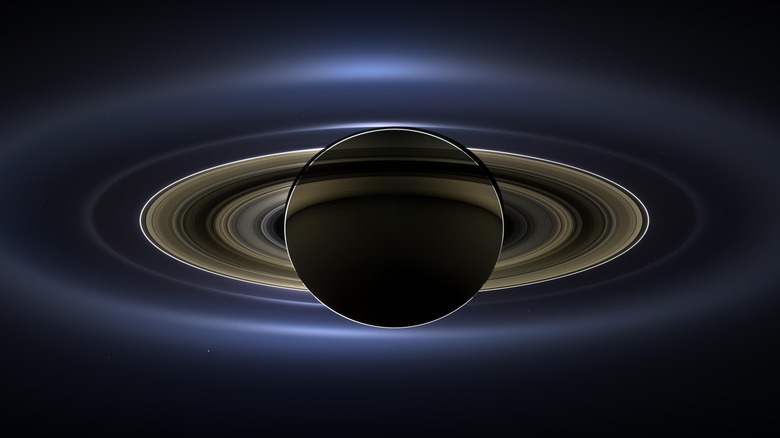This Wild New Theory Claims Saturn Was A Moon-Killer
Saturn is quite a sight, but its stunning rings and smorgasbord of natural satellites are also brimming with mysteries. From evidence of a subterranean liquid ocean on its moon Mimas and mysterious planetary aurorae at its poles to possibilities of a fuzzy planetary core and unexplained atmospheric chemicals on its second largest moon, Saturn continues to surprise experts. The latest in a series of mind-bending discoveries suggests that the planet once had a moon called "Chrysalis" that was apparently smashed to bits and became what we see now as planetary rings.
The findings, which have been published in the journal Science, suggest that Chrysalis was ripped apart by tidal forces of the gas giant after it came too close. Saturn spins around at a tilt of roughly 27-degrees, but so far, scientists have suspected that gravitational interactions with neighbouring planet Neptune is responsible for the oddity (via Reuters). However, data suggests that Saturn fell out of Neptune's orbital resonance influence a while ago.
To explain the odd behaviour, scientists surmised that Saturn once had 84 moons, instead of the 83 natural satellites that we see today. This lost moon, which the team has named Chrysalis, may have circled Saturn for billions of years and also kept the planet's resonance interaction with Neptune intact (via Science). However, owing to orbital disturbances, Chrysalis destabilised and started getting a little too close to Saturn some 160 million years ago.
Kill a moon, get a ring
To understand how the events may have transpired, scientists chose Saturn's moon Iapetus as a reference and created another satellite called Chrysalis to study the planetary dynamics. The team ran 390 simulation processes, and in some of them, Chrysalis either collided with fellow satellites or got knocked away from its orbital trajectory. Interestingly, of the 390 simulation rounds, 17 tests implied that Chrysalis came too close to Saturn and was subsequently torn apart by the strong gravitational forces.
The remnants of the destroyed moon floated in orbit for a while, and as time passed, they broke into smaller icy fragments and formed the rings that we see today. The simulation models offer a fascinating perspective by spinning the planetary wheels backward in time. Plus, the modelling experiment also purportedly solves the mystery of how Saturn escaped its resonance equation with Neptune and acquired its signature tilt. Of course, more concrete evidence is needed to verify the theory, but the behavior is not unprecedented.
Jupiter's tidal forces are known to break apart large wandering comets into smaller pieces if they pass too close to the giant. In binary systems, larger stars have been observed sucking up gaseous material like some sort of stellar vampire. Black holes, well, they do something even more extreme, called "Spaghettification," in which their immense gravitational force pulls a star with such force that the stream of material looks like filaments.

